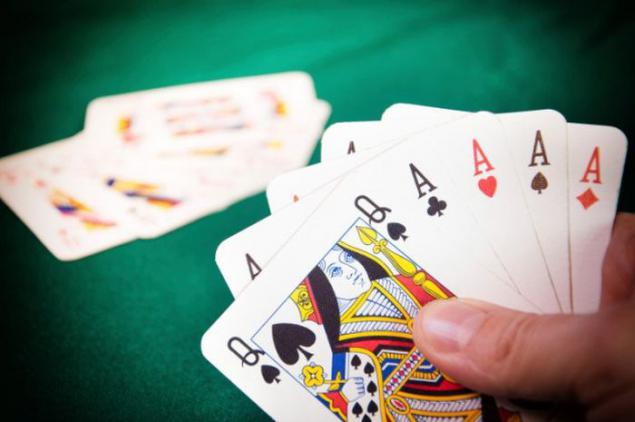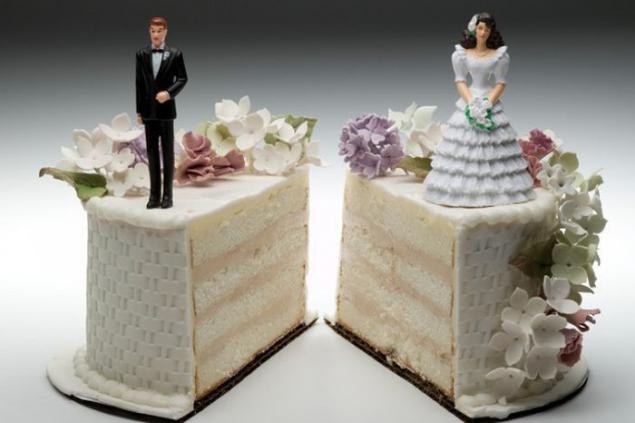1596
Such ordinary things
10. The metric system of measurement.
Only three countries in the world today do not use the metric system of measures. This Myanmar, Liberia and the United States. Liberia has partially passed on the metric, Myanmar is currently in the process of transition, and only US show off. The proposal to switch to the metric system of calculation was recently submitted to the legislature in Hawaii (for those who do not know, this is one of the states in the US), but it did not get enough votes.
For the rest of the world the metric system is a familiar part of everyday life. It was first introduced in France in 1795 and soon became popular throughout Europe, has reached Asia, Africa and conquered almost the entire globe. Its origins can be traced back to the French Revolution, when disgruntled peasants demanded the unification and standardization of weights and measures. The government decided that the system should be "natural, permanent and perfect" and most importantly, that she could describe anything in the world.
French Academy of Sciences commissioned its most respected astronomers Pierre François André Mechain and Messier, accurately measure one ten-millionth of the distance between the equator and the North Pole. It is this distance, it was decided to call "meter". To do this, the Messiah was to head north to Dunkirk, and Mechain south to Barcelona.
Their journey was fraught with danger, since they are often mistaken for spies. After arriving in Barcelona and send the measurements Mechain had an accident. While he was recuperating, between France and Spain, the war broke out, and he became an enemy and was under house arrest. No longer having any affairs, he pored over their 10,000 measurements to make sure they were correct, and, to his horror, found a bug. Astronomer returned to France and learned that it was too late to make any corrections, but he was still determined to find the exact value. Unfortunately, when he returned to Barcelona, he contracted malaria and died. The conclusion? The meter then we have deviated.

9. Spices and seasonings.
In the past, a pinch of salt, pepper and a spoonful of sugar was quite difficult to get. Salt was important for the storage of raw meat and other food on a long journey, so it was worth much more than today. Carts with salt crossed the Sahara desert, finding their way by the stars, the wind direction and characteristics of the dunes. Today, West Africa, one of the poorest regions in the world, was once one of the richest (in 800-1500 years), due to the abundance of salt deposits.
Salt trade brings huge profits. City Solnitsata in modern Bulgaria, the earliest known city in Europe, owed his fame industry focused on the production of salt, which is envied by all the Balkans. He is believed to have flourished more in the 4700-4200 years BC, thanks to the importation of salt.
Civilization were born and died, but the salt is always appreciated. It is because of the important role of salt, it is issued by the Roman soldiers, as the currency to appreciate absolutely everywhere. Roman name of salt «salarium» proroditelem became well-known words «sale».
Sugar probably appeared in New Guinea 10,000 years ago. Locals trosnik chewed and considered him a tasty treat. About this sweetener found life on the Asian continent, where the Indians have started to turn it into powder. The ancient Greeks also knew sugar and mentioned him as "honey, similar in appearance to salt" and believed that sugar was medicine. A medieval crusaders returning to Europe, talked about the magnificent "sweet salt".
European explorers of America did not want to open it, they wanted to find a shorter way to Asia to establish maritime traffic. And the main purpose of this route were spices, especially black pepper, which could afford only the rich Europeans. Pea black pepper is also used as part of the ritual of mummification of the Egyptian pharaohs, and Ramses II found in the nose of a pea black pepper. Pliny once complained that Rome was spending too much gold on the pepper, and indeed 50 million sesterces spend annually on the importation of goods from India. Pepper was such a sought-after commodity that became known as the first "black gold" and used it as currency. Alaric, king of the Visigoths, and Attila demanded in exchange for the termination of the massacre more than a ton of pepper.

8. SELF.
Technological progress has given us a great opportunity to preserve the best moments on film or in a "figure", but it all began thousands of years ago. The concept of "picture" was first used by the Chinese philosopher Mo Tzu in the fifth century BC, Aristotle used the "camera obscura" to watch the eclipse, a century later.
While the love of a mirror in srednvekove led to the creation of self-portraits, the first "self" is believed to have been made in 1839 by Robert Cornelius, an amateur chemist and fan photos from Philadelphia. Using the daguerreotype, a technology that became available only recently, Cornelius stood a little away from the machine, so that the camera does not hit the shot, peering into gear before you took the picture. After all, it all looks so self. On the back of his pictures was written, "The first ever made single shot. 1839 »
Several decades later, the group won wide popularity SELF, as evidenced by a photo of Byron and his buddies are dated 1909. In 1914, even the Duchess Anastasia Romanov daughter, took part in this craze.

7. Cutlery.
Plugs were initially used only for cooking and ate food with hands and knives. But in the 1004 Middle East and the Byzantine Empire had already begun to use a fork with the meal, although it was a privilege for the rich.
When the Byzantine princess married the son of the Doge of Venice, it served were shocked when she waved devices during the banquet. They thought that this practice was an affront to God because of the "replacement metal forks donated God fingers". They mocked the princess because of the "luxury of her habits" and "fear to touch the food." When the princess died a few years later, it is considered the use of the fork caused her death. God does not forgive her sins and sent down death.
But the practice of using forks during lunch, slowly but surely, for several centuries, conquered Europe. In 1608 the English traveler named Thomas Koryat described how the Italians' cut meat with a knife, holding a fork in the left hand, and those who touch the dish with his own hands broke the rules of etiquette. " Koryat sought to extend this dining etiquette in England, but the British did not accept custom, calling it «Furcifer» or "fork-bearer."
Britons remain indifferent to the use of the fork even after it gained popularity in France when King Louis XIV, announced sharp knives illegal. Even in 1897 the British sailors preferred to eat with your hands, because they believed that it was "not a man."
On the other side of the Earth, Asia, chopsticks used as utensils for over 5,000 years, and the forks are used here only to get large pieces of food from the pan. Around 400 BC, the Chinese began to cook food in smaller size capacity, so the need to use large knives and forks completely disappeared. Using chopsticks was sung in the Confucian scholars who believe that "an honorable man ... will not tolerate the presence of the knives on the table."
Using chopsticks spread throughout East Asia. The Japanese also used them in ceremonies, so a similar position chopsticks in a bowl of rice with incense sticks during the funeral of a great mistake to think of etiquette. And the Koreans believed that the closer to the end you hold chopsticks, the longer you do not marry. While the villagers used wooden sticks, used silver-rich, suggesting that the metal will be black if the food is poisoned.

6. Playing Cards.
A deck of 52 cards is likely to have Arabic roots, and has appeared at the Mamluks in Egypt, or the Muslims in Spain. Method of playing cards was similar to the one that we use today: the four suits and seniority of cards. However, the royal throne at the time were dominated by men, so among these cards were not ladies.
The first suits were bowls, swords, coins and polo clubs. Recent eventually became batons, as the Europeans had no idea what it is. Later they became familiar Hearts, Spades, diamonds and clubs. The practice of using colors may appear in China, which is already in the year 800 there was a practice of playing cards. These Chinese card used increasing value of the coins.
Along with the growing popularity of cards, complicated rules and their practical application. In 1674, Charles Cotton published The Compleat Gamester, and 10 years later in North America were issued paper money to play cards IOUs. Maps even reflect the political climate: during the Renaissance, they were decorated with bright images of the Christian or philosophical content.
Revolutionaries in France began to play games with the leadership of aces showing the triumph of the common man over the monarchy. They also replaced the kings, queens and jacks "privileges, fraternity and equality" because of their disdain for members of the royal family. The coming to power of Napoleon and the new regime abolished many of the radical changes made by revolutionaries, but the ace left in the deck.

5. Toilet paper.
The first mention of the use of toilet paper can be attributed to the sixth century. It first appeared in China, when a scientist named Jan Zhityui said: "The paper on which there are quotations or commentaries of sages, I dare not use the toilet in order." When Muslims visited China in the ninth century, they were stunned by the Chinese practice, noting with disgust that the Chinese "are terrible regarding cleanliness - they do not wash themselves with water, they wipe themselves with paper!»
History of toilet paper lasted for several hundred years until 1391, when the Chinese emperor ordered its mass production. He ordered to produce 720,000 sheets measuring 0.6 meters by 0.9 meters each year solely for personal use.
Approximately 300 years later, American Joseph Geyetti invented packaged toilet paper, which were sold under the name "Therapeutic Paper". The sheets were coated with aloe to soothe wounds, and each packet of 500 sheets worth $ 0.50. The name of Joseph is printed on each package to remind people that he was a source of joy for the priests.

4. Hygiene for women.
In ancient Egypt, menstruation treated fairly positive. She likened the Nile River, which was a symbol of renewal and fertility, and even used for medicinal purposes. For example, the application of the monthly blood on his chest, was believed to have made her more resilient. Ancient Egyptians, Greeks and Romans used a lot of materials for the manufacture of women hygienic tampons: papyrus, wool, skins and even the grass.
Only in 1896, Joseph Lister, the same man who inspired millions to use mouthwash and wash their hands before treating patients, Brother Johnson was inspired to create the gaskets in the package, known as the "Towel Lister." Unfortunately for Johnson & Johnson, their first attempt to infiltrate the industry means for hygiene failed because women were simply not willing to buy such things in public.
In 1998 an Indian named Arunachalam Muruganantam bothered that his wife uses a "nasty tissue" during monthly instead of sanitary napkins. When my wife said that such things are damn expensive, Arunachalam decided to invent a cheaper gasket, but he had one problem: he did not know what actually goes menstruation. To understand this, he created the "womb" of the football chamber filled with the blood of the goat, and hid it under her clothes to test the absorbency of his invention. Every time he washed his clothes, the villagers thought he was - a pervert, or crazy, or is under the influence of demons, but its cheap sanitary pads eventually earned him an award for innovation from the Indian president.

3. bra.
The origin of the modern bra refers to 1910, when 19-year-old Mary Phelps Jacobs plan your outfit for the upcoming prom. She chose a dress that emphasizes her pretty curvy shape, but it felt too restrictive corsets. Instead, she asked her maid brought her two handkerchiefs and ribbon, creating a progenitor of the modern bra.
Lady of high society continually asked young Mary as she could move and dance so freely, and four years later she was given a patent for a "low cut bra." While Ms. Jacobs historically acquired the rights for the invention of the bra, recent archaeological excavations have shown that women wore linen bras since the beginning of the 15th century.
In the following decades after the invention of genius Jacobs, bra went through a lot of changes. The most famous of them - creating Wonderbra, developed in 1964 by Louise Poirier for lingerie Canadelle. However, the idea of a push-up bra appeared much earlier. The first such bra was designed by Frederick Mellinger in 1946 and soon became very popular in Hollywood, where he was called a "rising star." But its popularity did not last long, in 1970 invented a different model.

2. Divorce.
The divorce rate in modern society at all-time high, and old-fashioned people criticize couples divorcing after several hours of marriage or for silly reasons, such as snoring or bad joke. However, divorce was quite a common practice in ancient civilizations.
In ancient Egypt, the marriage did not need legal confirmation and simply a man and a woman living under the same roof. Divorce and remarriage were fairly common. In Greece, the issue was considered by the judges. In Japan, if the husband refused to divorce his wife could stay in the temple for three years, after which the marriage is terminated automatically. A Viking women could leave a man, if he was unable to provide for his family.
In Medieval Britain divorce was a spiritual issue. Anglican Church, which ironically allowed Henry VIII to divorce his first wife, was more rigorous than Catholic, which it seeks to displace. Changes have been made possible only thanks to Caroline Sheridan, the wife of a member of Parliament George Norton.
With Sheridan mistreated by her husband, and she found solace only in children and writing. Norton once forced her to become more "friendly" to the Lord Melboernu to sue him, get the money and blame Sheridan adultery. Norton lost the case, but continued to mock his wife and children, causing Sheridan to campaign for the rights of married women in the UK. She lobbied for women's right to divorce, to publish pamphlets, and even wrote to the Queen Victoria. Thanks to her efforts appeared divorce law of 1857.

1. Crime and Punishment.
History of crime and punishment as a tool of the state, can be traced back to Babylon and the "Code of Hammurabi", which involves retribution for those who broke the law. The Greeks, for example, the penalties for certain crimes, such as treason or government debt. Since the poor were unable to pay, they are often imprisoned for long periods, resulting in a maximal punishment.
In most cases, the justice of punishment is also part of this tool. In Rome, if you were rich, you were placed under house arrest; If you - a simple man, you have been waiting executioner blade or slave market. In some cases, criminals offered voluntarily leave the house and go into exile. Offenders who are in prison, awaiting trial, called «publica vincula» or «carcer», that is, "deprived of their liberty."
By 1570 labor camps where to send criminals called "prison" and they became commonplace. In 1680 the Quakers began to defend the measure of restraint in the form of imprisonment as an alternative to the death penalty, but in the US today in 32 states still practice the death penalty.
The practice of notifying the public about finding the perpetrator can be traced back to the Bible. After Cain killed his brother Abel, he was marked by God to distinguish it from all others. Practice this "marking" the offender has spread to Europe in the 18th century. And more often than you could meet the scarlet letter A for "adulterer".
Only three countries in the world today do not use the metric system of measures. This Myanmar, Liberia and the United States. Liberia has partially passed on the metric, Myanmar is currently in the process of transition, and only US show off. The proposal to switch to the metric system of calculation was recently submitted to the legislature in Hawaii (for those who do not know, this is one of the states in the US), but it did not get enough votes.
For the rest of the world the metric system is a familiar part of everyday life. It was first introduced in France in 1795 and soon became popular throughout Europe, has reached Asia, Africa and conquered almost the entire globe. Its origins can be traced back to the French Revolution, when disgruntled peasants demanded the unification and standardization of weights and measures. The government decided that the system should be "natural, permanent and perfect" and most importantly, that she could describe anything in the world.
French Academy of Sciences commissioned its most respected astronomers Pierre François André Mechain and Messier, accurately measure one ten-millionth of the distance between the equator and the North Pole. It is this distance, it was decided to call "meter". To do this, the Messiah was to head north to Dunkirk, and Mechain south to Barcelona.
Their journey was fraught with danger, since they are often mistaken for spies. After arriving in Barcelona and send the measurements Mechain had an accident. While he was recuperating, between France and Spain, the war broke out, and he became an enemy and was under house arrest. No longer having any affairs, he pored over their 10,000 measurements to make sure they were correct, and, to his horror, found a bug. Astronomer returned to France and learned that it was too late to make any corrections, but he was still determined to find the exact value. Unfortunately, when he returned to Barcelona, he contracted malaria and died. The conclusion? The meter then we have deviated.

9. Spices and seasonings.
In the past, a pinch of salt, pepper and a spoonful of sugar was quite difficult to get. Salt was important for the storage of raw meat and other food on a long journey, so it was worth much more than today. Carts with salt crossed the Sahara desert, finding their way by the stars, the wind direction and characteristics of the dunes. Today, West Africa, one of the poorest regions in the world, was once one of the richest (in 800-1500 years), due to the abundance of salt deposits.
Salt trade brings huge profits. City Solnitsata in modern Bulgaria, the earliest known city in Europe, owed his fame industry focused on the production of salt, which is envied by all the Balkans. He is believed to have flourished more in the 4700-4200 years BC, thanks to the importation of salt.
Civilization were born and died, but the salt is always appreciated. It is because of the important role of salt, it is issued by the Roman soldiers, as the currency to appreciate absolutely everywhere. Roman name of salt «salarium» proroditelem became well-known words «sale».
Sugar probably appeared in New Guinea 10,000 years ago. Locals trosnik chewed and considered him a tasty treat. About this sweetener found life on the Asian continent, where the Indians have started to turn it into powder. The ancient Greeks also knew sugar and mentioned him as "honey, similar in appearance to salt" and believed that sugar was medicine. A medieval crusaders returning to Europe, talked about the magnificent "sweet salt".
European explorers of America did not want to open it, they wanted to find a shorter way to Asia to establish maritime traffic. And the main purpose of this route were spices, especially black pepper, which could afford only the rich Europeans. Pea black pepper is also used as part of the ritual of mummification of the Egyptian pharaohs, and Ramses II found in the nose of a pea black pepper. Pliny once complained that Rome was spending too much gold on the pepper, and indeed 50 million sesterces spend annually on the importation of goods from India. Pepper was such a sought-after commodity that became known as the first "black gold" and used it as currency. Alaric, king of the Visigoths, and Attila demanded in exchange for the termination of the massacre more than a ton of pepper.

8. SELF.
Technological progress has given us a great opportunity to preserve the best moments on film or in a "figure", but it all began thousands of years ago. The concept of "picture" was first used by the Chinese philosopher Mo Tzu in the fifth century BC, Aristotle used the "camera obscura" to watch the eclipse, a century later.
While the love of a mirror in srednvekove led to the creation of self-portraits, the first "self" is believed to have been made in 1839 by Robert Cornelius, an amateur chemist and fan photos from Philadelphia. Using the daguerreotype, a technology that became available only recently, Cornelius stood a little away from the machine, so that the camera does not hit the shot, peering into gear before you took the picture. After all, it all looks so self. On the back of his pictures was written, "The first ever made single shot. 1839 »
Several decades later, the group won wide popularity SELF, as evidenced by a photo of Byron and his buddies are dated 1909. In 1914, even the Duchess Anastasia Romanov daughter, took part in this craze.

7. Cutlery.
Plugs were initially used only for cooking and ate food with hands and knives. But in the 1004 Middle East and the Byzantine Empire had already begun to use a fork with the meal, although it was a privilege for the rich.
When the Byzantine princess married the son of the Doge of Venice, it served were shocked when she waved devices during the banquet. They thought that this practice was an affront to God because of the "replacement metal forks donated God fingers". They mocked the princess because of the "luxury of her habits" and "fear to touch the food." When the princess died a few years later, it is considered the use of the fork caused her death. God does not forgive her sins and sent down death.
But the practice of using forks during lunch, slowly but surely, for several centuries, conquered Europe. In 1608 the English traveler named Thomas Koryat described how the Italians' cut meat with a knife, holding a fork in the left hand, and those who touch the dish with his own hands broke the rules of etiquette. " Koryat sought to extend this dining etiquette in England, but the British did not accept custom, calling it «Furcifer» or "fork-bearer."
Britons remain indifferent to the use of the fork even after it gained popularity in France when King Louis XIV, announced sharp knives illegal. Even in 1897 the British sailors preferred to eat with your hands, because they believed that it was "not a man."
On the other side of the Earth, Asia, chopsticks used as utensils for over 5,000 years, and the forks are used here only to get large pieces of food from the pan. Around 400 BC, the Chinese began to cook food in smaller size capacity, so the need to use large knives and forks completely disappeared. Using chopsticks was sung in the Confucian scholars who believe that "an honorable man ... will not tolerate the presence of the knives on the table."
Using chopsticks spread throughout East Asia. The Japanese also used them in ceremonies, so a similar position chopsticks in a bowl of rice with incense sticks during the funeral of a great mistake to think of etiquette. And the Koreans believed that the closer to the end you hold chopsticks, the longer you do not marry. While the villagers used wooden sticks, used silver-rich, suggesting that the metal will be black if the food is poisoned.

6. Playing Cards.
A deck of 52 cards is likely to have Arabic roots, and has appeared at the Mamluks in Egypt, or the Muslims in Spain. Method of playing cards was similar to the one that we use today: the four suits and seniority of cards. However, the royal throne at the time were dominated by men, so among these cards were not ladies.
The first suits were bowls, swords, coins and polo clubs. Recent eventually became batons, as the Europeans had no idea what it is. Later they became familiar Hearts, Spades, diamonds and clubs. The practice of using colors may appear in China, which is already in the year 800 there was a practice of playing cards. These Chinese card used increasing value of the coins.
Along with the growing popularity of cards, complicated rules and their practical application. In 1674, Charles Cotton published The Compleat Gamester, and 10 years later in North America were issued paper money to play cards IOUs. Maps even reflect the political climate: during the Renaissance, they were decorated with bright images of the Christian or philosophical content.
Revolutionaries in France began to play games with the leadership of aces showing the triumph of the common man over the monarchy. They also replaced the kings, queens and jacks "privileges, fraternity and equality" because of their disdain for members of the royal family. The coming to power of Napoleon and the new regime abolished many of the radical changes made by revolutionaries, but the ace left in the deck.

5. Toilet paper.
The first mention of the use of toilet paper can be attributed to the sixth century. It first appeared in China, when a scientist named Jan Zhityui said: "The paper on which there are quotations or commentaries of sages, I dare not use the toilet in order." When Muslims visited China in the ninth century, they were stunned by the Chinese practice, noting with disgust that the Chinese "are terrible regarding cleanliness - they do not wash themselves with water, they wipe themselves with paper!»
History of toilet paper lasted for several hundred years until 1391, when the Chinese emperor ordered its mass production. He ordered to produce 720,000 sheets measuring 0.6 meters by 0.9 meters each year solely for personal use.
Approximately 300 years later, American Joseph Geyetti invented packaged toilet paper, which were sold under the name "Therapeutic Paper". The sheets were coated with aloe to soothe wounds, and each packet of 500 sheets worth $ 0.50. The name of Joseph is printed on each package to remind people that he was a source of joy for the priests.

4. Hygiene for women.
In ancient Egypt, menstruation treated fairly positive. She likened the Nile River, which was a symbol of renewal and fertility, and even used for medicinal purposes. For example, the application of the monthly blood on his chest, was believed to have made her more resilient. Ancient Egyptians, Greeks and Romans used a lot of materials for the manufacture of women hygienic tampons: papyrus, wool, skins and even the grass.
Only in 1896, Joseph Lister, the same man who inspired millions to use mouthwash and wash their hands before treating patients, Brother Johnson was inspired to create the gaskets in the package, known as the "Towel Lister." Unfortunately for Johnson & Johnson, their first attempt to infiltrate the industry means for hygiene failed because women were simply not willing to buy such things in public.
In 1998 an Indian named Arunachalam Muruganantam bothered that his wife uses a "nasty tissue" during monthly instead of sanitary napkins. When my wife said that such things are damn expensive, Arunachalam decided to invent a cheaper gasket, but he had one problem: he did not know what actually goes menstruation. To understand this, he created the "womb" of the football chamber filled with the blood of the goat, and hid it under her clothes to test the absorbency of his invention. Every time he washed his clothes, the villagers thought he was - a pervert, or crazy, or is under the influence of demons, but its cheap sanitary pads eventually earned him an award for innovation from the Indian president.

3. bra.
The origin of the modern bra refers to 1910, when 19-year-old Mary Phelps Jacobs plan your outfit for the upcoming prom. She chose a dress that emphasizes her pretty curvy shape, but it felt too restrictive corsets. Instead, she asked her maid brought her two handkerchiefs and ribbon, creating a progenitor of the modern bra.
Lady of high society continually asked young Mary as she could move and dance so freely, and four years later she was given a patent for a "low cut bra." While Ms. Jacobs historically acquired the rights for the invention of the bra, recent archaeological excavations have shown that women wore linen bras since the beginning of the 15th century.
In the following decades after the invention of genius Jacobs, bra went through a lot of changes. The most famous of them - creating Wonderbra, developed in 1964 by Louise Poirier for lingerie Canadelle. However, the idea of a push-up bra appeared much earlier. The first such bra was designed by Frederick Mellinger in 1946 and soon became very popular in Hollywood, where he was called a "rising star." But its popularity did not last long, in 1970 invented a different model.

2. Divorce.
The divorce rate in modern society at all-time high, and old-fashioned people criticize couples divorcing after several hours of marriage or for silly reasons, such as snoring or bad joke. However, divorce was quite a common practice in ancient civilizations.
In ancient Egypt, the marriage did not need legal confirmation and simply a man and a woman living under the same roof. Divorce and remarriage were fairly common. In Greece, the issue was considered by the judges. In Japan, if the husband refused to divorce his wife could stay in the temple for three years, after which the marriage is terminated automatically. A Viking women could leave a man, if he was unable to provide for his family.
In Medieval Britain divorce was a spiritual issue. Anglican Church, which ironically allowed Henry VIII to divorce his first wife, was more rigorous than Catholic, which it seeks to displace. Changes have been made possible only thanks to Caroline Sheridan, the wife of a member of Parliament George Norton.
With Sheridan mistreated by her husband, and she found solace only in children and writing. Norton once forced her to become more "friendly" to the Lord Melboernu to sue him, get the money and blame Sheridan adultery. Norton lost the case, but continued to mock his wife and children, causing Sheridan to campaign for the rights of married women in the UK. She lobbied for women's right to divorce, to publish pamphlets, and even wrote to the Queen Victoria. Thanks to her efforts appeared divorce law of 1857.

1. Crime and Punishment.
History of crime and punishment as a tool of the state, can be traced back to Babylon and the "Code of Hammurabi", which involves retribution for those who broke the law. The Greeks, for example, the penalties for certain crimes, such as treason or government debt. Since the poor were unable to pay, they are often imprisoned for long periods, resulting in a maximal punishment.
In most cases, the justice of punishment is also part of this tool. In Rome, if you were rich, you were placed under house arrest; If you - a simple man, you have been waiting executioner blade or slave market. In some cases, criminals offered voluntarily leave the house and go into exile. Offenders who are in prison, awaiting trial, called «publica vincula» or «carcer», that is, "deprived of their liberty."
By 1570 labor camps where to send criminals called "prison" and they became commonplace. In 1680 the Quakers began to defend the measure of restraint in the form of imprisonment as an alternative to the death penalty, but in the US today in 32 states still practice the death penalty.
The practice of notifying the public about finding the perpetrator can be traced back to the Bible. After Cain killed his brother Abel, he was marked by God to distinguish it from all others. Practice this "marking" the offender has spread to Europe in the 18th century. And more often than you could meet the scarlet letter A for "adulterer".























